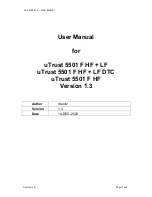
Chapter
10
Operating Instructions
CLV 480 Bar Code Scanner
10-66
©
SICK AG · Division Auto Ident · Germany · All rights reserved
8 010 080/O824/10-02-2005
Appendix
Terminator
Data block in the reading result on the
Ö
host interface. Used to terminate the data content
of the bar code. Contains up to 10 elements, consisting of reading diagnosis data and/or
constants (control characters, letters, digits), depending on the configuration. The "Termina-
tor" block is empty in the default setting of the CLV 480.
Tracking mode
With this type of continuous reading pulse, several objects are located consecutively in the
reading field. To enable the read bar codes to be uniquely assigned to objects, a minimum
gap has to be ensured between the objects and the conveyor increment signals have to be
supplied. The CLV is used in conjunction with other CLVs in a network with the OTC 400 (e.g.
omni-directional 3-side reading). The CLV receives pulse signals and increment values via
the OTC 400. In this case, the size of the reading field is determined by the distance be-
tween the external sensor for the start/end of the object at the start of the reading field and
the object enable point (data output) of the OTC 400 in the conveyor direction at the end of
the reading field. The devices are connected via the CAN interface. The CLV manages re-
corded objects in an internal object tracking list.
Upload
Method of transferring the
Ö
parameter set from the CLV to the PC
Ö
using the CLV-Setup
program. CLV-Setup either transfers a complete copy of the current parameter set from the
memory (RAM) of the CLV (U
PLOAD
TO
CLV) or just the parameter previously processed using
the context menu of the right mouse button (U
PLOAD
P
ARAMETER
) or all parameters of the dis-
played tab (U
PLOAD
P
ARAMETERS
OF
THIS
V
IEW
). Displays the current parameter values on the
tabs. Prerequisite for modifying the current parameter set.
User interface
Windows-based PC software "CLV-Setup" for operating and configuring the CLV.









































